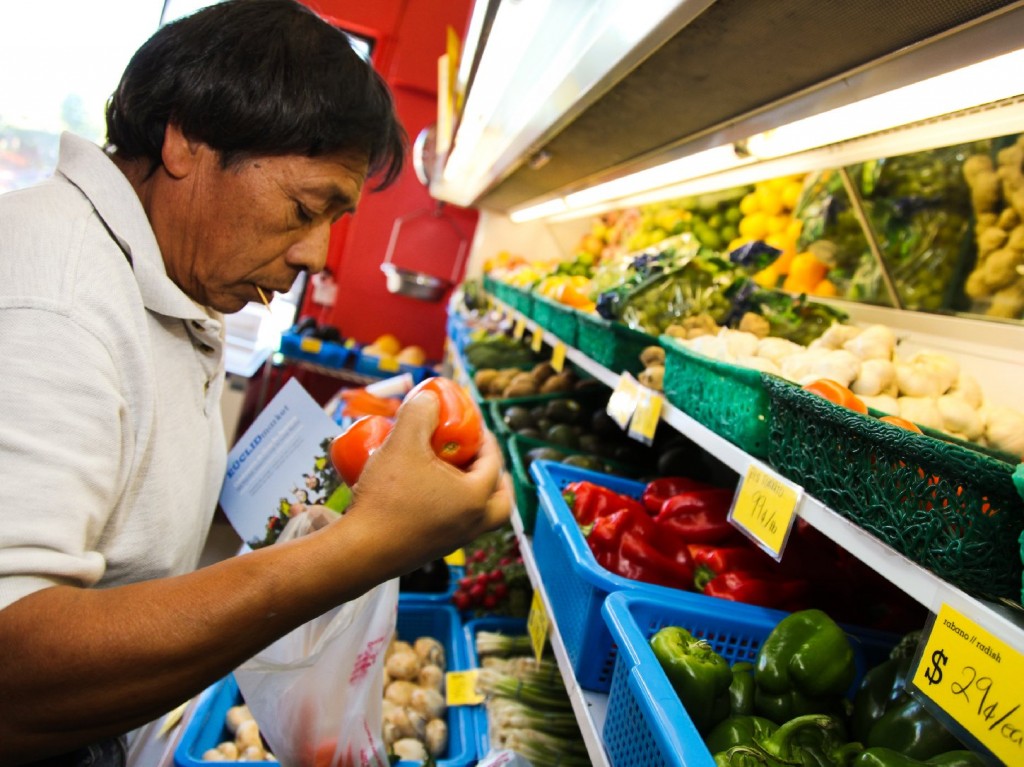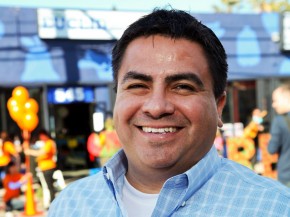
Post by Patti Neighmond, The Salt at NPR Food (2/10/14)
Listen to the Story on Morning Edition

Post by Patti Neighmond, The Salt at NPR Food (2/10/14)
Listen to the Story on Morning Edition
In inner cities and poor rural areas across the country, public health advocates have been working hard to turn around food deserts — neighborhoods where fresh produce is scarce, and greasy fast food abounds. In many cases, they're converting dingy, cramped corner markets into lighter, brighter venues that offer fresh fruits and vegetables. In some cases, they're building brand new stores.
"The presumption is, if you build a store, people are going to come," says Stephen Matthews, professor in the departments of sociology, anthropology and demography at Penn State University. To check that notion, he and colleagues from the London School of Hygiene and Tropical Medicine recently surveyed residents of one low-income community in Philadelphia before and after the opening of a glistening new supermarket brimming with fresh produce.
What they're finding, Matthews says, is a bit surprising: "We don't find any difference at all. ... We see no effect of the store on fruit and vegetable consumption."
Now, to be fair, the time was short. The store was only open for six months before residents were surveyed. Matthews says most residents knew that the store was there and that it offered healthy food. But only 26 percent said it was their regular "go to" market. And, as might be expected, those who lived close to the store shopped there most regularly.
Matthews says the findings dovetail with other work, and simply point to the obvious: Lots more intervention is needed to change behavior. For one thing, we're all used to routine, and many of us will just keep shopping where we've been shopping, even if a newer, more convenient and bountiful store moves in.
But more than that, he says, many people, particularly in low-income food deserts, just aren't used to buying or preparing healthy meals — they haven't had the opportunity, until now.

Alex Ortega, a public health researcher at the University of California, Los Angeles, agrees that providing access to nutritious food is only the first step.
"The next part of the intervention is to create demand," he says, "so the community wants to come to the store and buy healthy fruits and vegetables and go home and prepare those foods in a healthy way, without lots of fat, salt or sugar."
Ortega directs a UCLA project that converts corner stores into hubs of healthy fare in low-income neighborhoods of East Los Angeles. He and colleagues work with community leaders and local high school students to help create that demand for nutritious food. Posters and signs promoting fresh fruits and vegetables hang in corner stores, such as the Euclid Market in Boyle Heights, and at bus stops. There are nutrition education classes in local schools, and cooking classes in the stores themselves.
"We've prepared smoothies, healthy snacks, fruit salads, vegetables, green salads [and] quesadillas loaded with vegetables," says Ortega.
"I had a mother who approached me to tell me she had learned a lot from prior cooking demonstrations about healthy eating," he says, "and, because of what she learned about nutrition and about reducing saturated fats and sodium, and increasing fiber intake in her diet, she lost over 20 pounds. And her daughter lost 10 pounds." This is a really important achievement, he notes, in an area struggling with obesity and all its related health problems, including diabetes.
The jury's still out on whether these conversions of corner stores are actually changing people's diets and health. The evidence is still being collected. But the hope, of course, Ortega says, is that creating demand for healthy food, as well as improving access, will make a difference in what residents eat — and, ultimately, in their weight and health.
Copyright 2014 NPR.